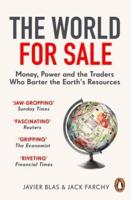Publisher's Synopsis
Few financial products are as misunderstood as whole life insurance. Financial experts vehemently argue the merits and limitations of whole life insurance - some praising its benefits while others claiming the product should be thrown in the trash heap of history. This book cuts through the confusion surrounding whole life insurance, providing an accurate explanation of how the product works and where it fits within an overall financial strategy. Whole life insurance is not a one-stop, fix-all, magical product that will make all your wildest dreams come true. It is, however, a fantastic product that should seriously be considered as an integral part of an overall financial strategy. Whole life insurance offers many benefits that can only be obtained through life insurance while also providing significant advantages offered by the tax code.While parts of the book are fairly technical, the concepts are easy to follow. This book helps readers understand how to effectively use whole life insurance to secure a permanent death benefit while building a non-market-correlated asset that can be used for multiple purposes. When used properly, whole life insurance can be a powerful, long-term conservative asset. Some of the practical applications covered in the book include using whole life insurance as an emergency fund, as a source of tax-advantaged retirement income, and as a means to help tame the effects of stock market volatility during retirement (managing sequence of returns risk). Additional covered topics include using whole life insurance as a cash management tool, as a means to take advantage of certain tax opportunities, and as a tool to help manage interest rate risk. In contrast to many other resources on whole life insurance, the book also examines the potential risks associated with accessing policy cash values and how to help mitigate those risks.The author also confronts many of the common arguments against whole life insurance, including "Buy Term and Invest the Difference", commissions vs. fees, and the use of indexed universal life over whole life insurance. In addition, the book provides clarity to some of the more misunderstood concepts advanced by infinite banking proponents.









